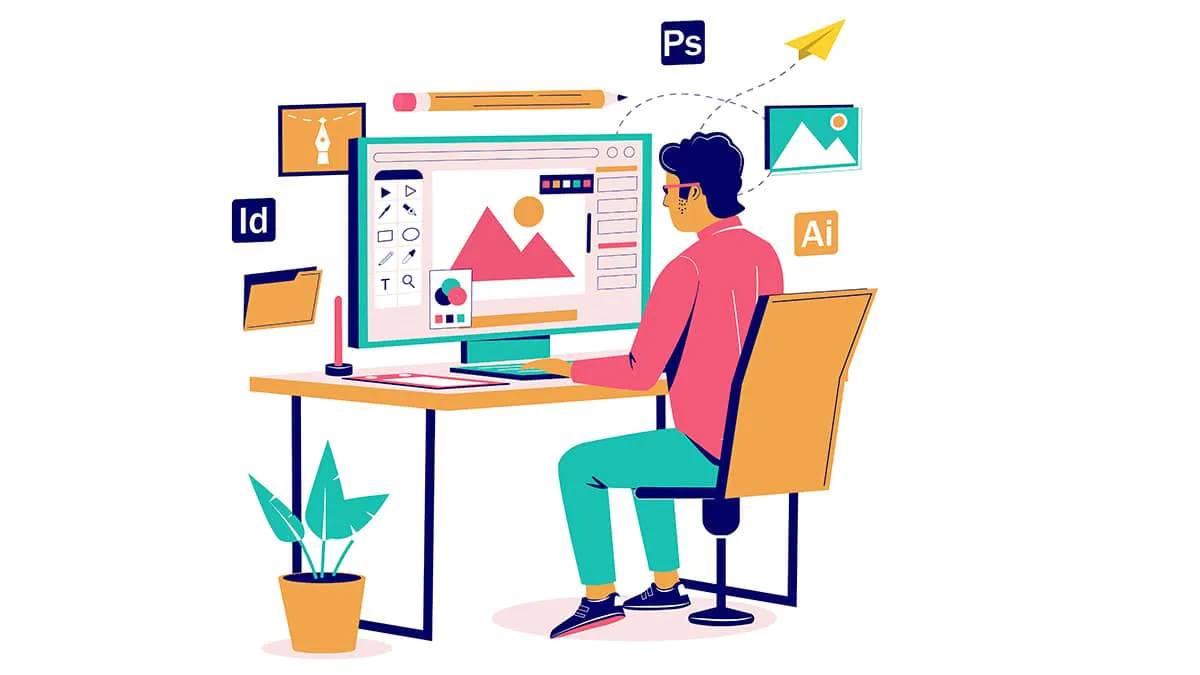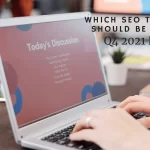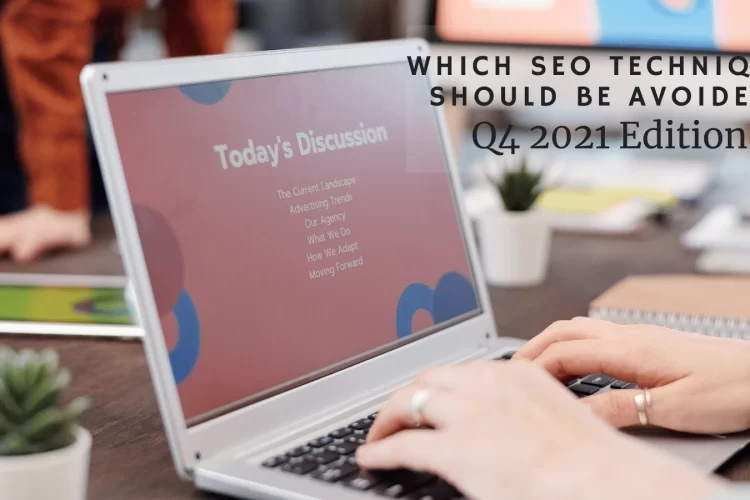
How can graphic design for business help you establish your brand, stand out, and elevate your business to new levels of success? In this article, we examine how graphic design can help you stand out, establish your brand, and elevate your business to new levels of success.
A lot of things can be done in order to improve your business, from research and development to exploring different marketing channels to running focus groups to solicit feedback on your products.
One thing is absolutely necessary for taking your business to the next level: Graphic design.
Consider these different ways graphic design can help your business (and take your brand from good to great in the process):
The power of graphic design on social media
One of the best methods of connecting with your audience is using social media-but only if you are able to break through the clutter of noise and competition to grab their attention. Graphic design is an excellent way to do this.
Images are key to connecting with your target audience. 90% of information transmitted to the brain is visual, and 40% of people respond better to visual information than plain text. Graphics that are well designed will help your social media posts pop off the screen, grab your viewers’ attention, and lead to a conversation. Don’t believe us? The data doesn’t lie:
√. Engagement rates for Facebook posts with images are 2.3x higher than those without
√. Images on Twitter can increase the number of retweets by 150% over text-only tweets.
√. In response to a blog post with relevant images, Pinterest traffic increased by 62.5%
You can increase your social media engagement by incorporating graphic design into your strategy. Have a new product launching? You should release product images on Instagram in the days leading up to the launch to get people hyped about the product. Know of an event coming up?
If you are moving into a new office, send photos of your new space to your followers to spur a discussion about what’s new and exciting about the business. Instead of posting a text-only Facebook update, design a flyer and send it to your followers.
To summarize: Graphic design can make you stand out on social media, and stand out on social media will help take your business to the next level.
Graphic design makes data impactful
Presenting complex information visually packs a powerful punch when you have impactful facts to share.
Diggi floor templates: like the Blue and White Triangle Shape Marketing Proposal or the Charity Infographic, let you arrange your information so it looks the best.
In most cases, you have a lot of information about your business that you want to share with the world. This could range from annual sales information to performance data to engagement statistics. And all this information can make a huge impact if you present it to the right people (such as investors or potential employees).
If you present it in a way that fails to engage your audience, no matter what impactful information you present about your business might contain, it will not connect with them. Nobody wants to read an endless stream of spreadsheets, bullet points, and long blocks of text.
This is where graphics come in. Leveraging graphics allows you to present data, information, and statistics about your business in a way that’s going to make an impact on your audience.
In terms of turning your data into visually compelling assets, there is no limit. Before you present at your company’s end-of-year meeting, consider pulling all of your key messaging together in a well-designed annual report.
Are you not sure what to do with the results of a recent customer survey? You could create an infographic, share it on social media, and use it to generate leads (infographics have been found to increase web traffic by 12%). Do you have a new product? As an alternative to writing out your instructions, create a visual how-to guide to explain how to use the product.
You want your audience to take away something valuable from your presentation so you should present it in a way that’s sure to resonate with them.
Graphic design helps you perfect your pitch deck
The right pitch deck can mean the difference between walking out of an investor meeting empty handed or with a nice, big check. Using a presentation template such as the Teal Cityscape Business or the White and Yellow Photographic Presentation will help you nail your presentation-and get one step closer to finding funding for your business.
If you’re going to present key information in an impactful way, when you’re first launching your business (or trying to scale your business), you need to impact investors the most.
When pitching to investors, you should frame your brand so that your brand builds value, and you should provide clear reasons why investors should invest in your company. Well-designed presentations and pitch decks are essential for driving funding. In addition to presenting key information in an attention-grabbing and visually striking way, they also show your ability to communicate clearly and effectively.
A business needs money, and sometimes, that money comes from investors. If you want to convince investors that you’re the best investment, you need to leverage graphic design to create a presentation or pitch deck that outlines your value proposition.
Graphic design helps build your brand
If you are designing key branding elements, you want them to be unique, but you don’t have to reinvent the wheel to do so. If you customize an industry or genre-specific logo template (like Black and Orange Barbell Sports Logo, Pink and Blue Badge Logo, or Black with Utensils Icon Restaurant Logo), you will be able to create a unique logo design to represent your brand-without having to start from scratch.
Imagine your branding as your corporate DNA. It outlines who you are as a company, what you stand for, what they can expect, and why they should work with you. Your branding communicates a lot, and a lot of that communication is visual.
You cannot underestimate the power of visual branding elements, which is why they are so important to get right!
To start bringing your branding to life visually, you need to be totally clear about who you are as a brand as well as what message you want your branding to send your audience. If you’re not totally clear on your branding, you’ll want to do some investigation work before you start designing.
Think about these questions to find out where you stand as a brand:
√. If my brand was a person, who would they be?
√. If you could describe your brand in three words, what would they be?
√. What’s my point of difference? How does my brand differentiate itself from the competition?
√. If my brand could talk, how would it speak? (So, for instance, would it be silly and quirky or serious and buttoned-up?)
√. Is there anything my brand does better than anyone else?
The more detailed you can get in your understanding of who you are and what you can offer your audience, the more clearly that will come across in your visual branding elements.
The next step is to make your brand personality a part of your visual identity. There are a number of elements you can use to strengthen your branding, connect with your audience, and drive engagement, including:
LOGO: A logo is the most important thing you’ll design for your company; it represents your brand, and will be the element people are most likely to associate with you and your business.
Website: As your brand’s online real estate, your website should serve as a place for people to discover your company and what you have to offer. It needs to be on-brand and well-designed so that it serves its purpose.
Brand color palette: Choosing the right colors for your brand color palette will communicate a very specific message to your audience. Before deciding on colors, do some research on color psychology.
Colors that inspire positive emotions in your audience will send a very different message to your audience from those that inspire negative emotions. Choose colors that inspire positive emotions in your audience.
Fonts/typography: Typography is just as important. If you choose Comic Sans as your font, it’s going to have a very different effect than Arial or Helvetica. Make sure that the fonts you choose, as well as how they’re used, match your brand.
Your visual brand elements are the face of your company and the framework for how you communicate with your audience – and when you make sure they are aligned with who you are as a brand, they can make a difference in taking your business to the next level.
Graphic design helps win potential customers
In order to maintain top-of-mind relationships with potential clients and customers, marketing materials must be well-designed. Create a marketing arsenal that does the work for you with templates for business cards (like the Red Monochrome Concert Photos Photographic Business Card), flyers (like the Yellow Bold Text Tutor Flyer), and brochures (like the Teal Creative Trifold Brochure).
Your goal when contacting a new business contact is to stay top of mind long after the meeting has ended, and the best way to do that is by using graphic design, of course.
Business cards, flyers, and brochures are vital marketing assets for growing your business, because they continue to communicate the key message to potential clients and customers while you’re not around. The marketing assets you get are also worth the time investment, once the initial design is complete, all that’s left is getting your marketing assets out into the world.
If you want your marketing assets to generate results for your business, there are some things you should keep in mind:
√. Stay on brand. It’s important that you incorporate your logo, brand colors and fonts into each of your communications-and that includes your marketing assets. Make sure you include your marketing logo, color palette, fonts, and any other key branding elements you may have.
√. When putting together a marketing brochure or flyer, there’s no need to write a book. Keep the copy short and to the point; don’t let your key messaging get lost amongst the text.
√. Don’t forget your contact information.
You’ll clearly want to include your contact information on your business cards, but don’t forget to include it in your other marketing materials, too. When it comes to marketing assets, the entire goal is to drive business, but if clients and customers don’t know how to contact you, they’re going to go to someone else.




